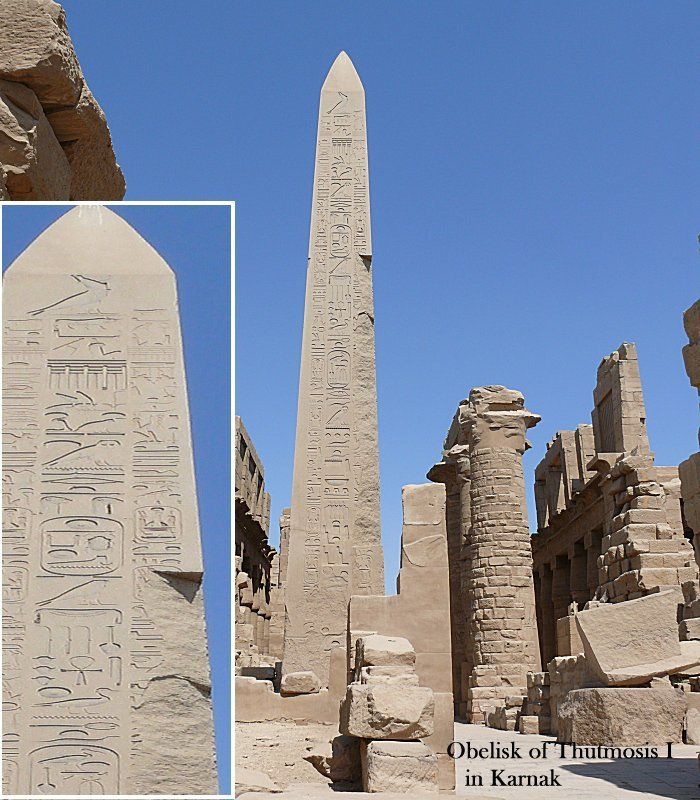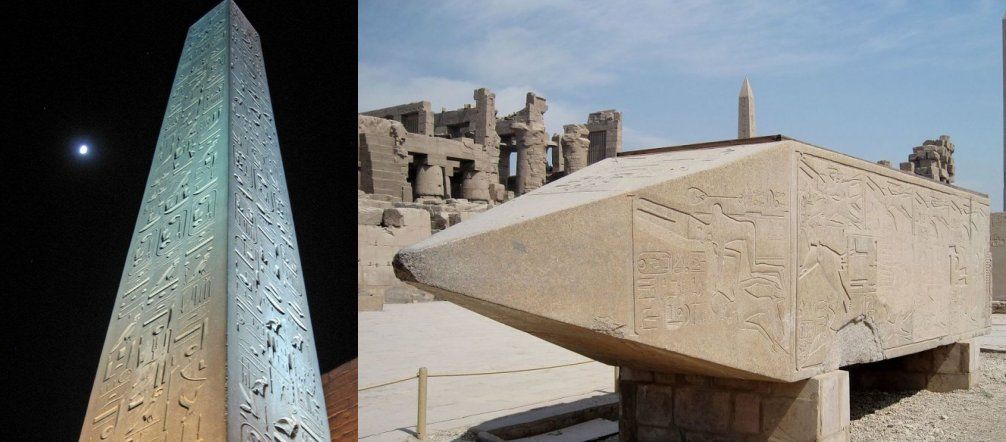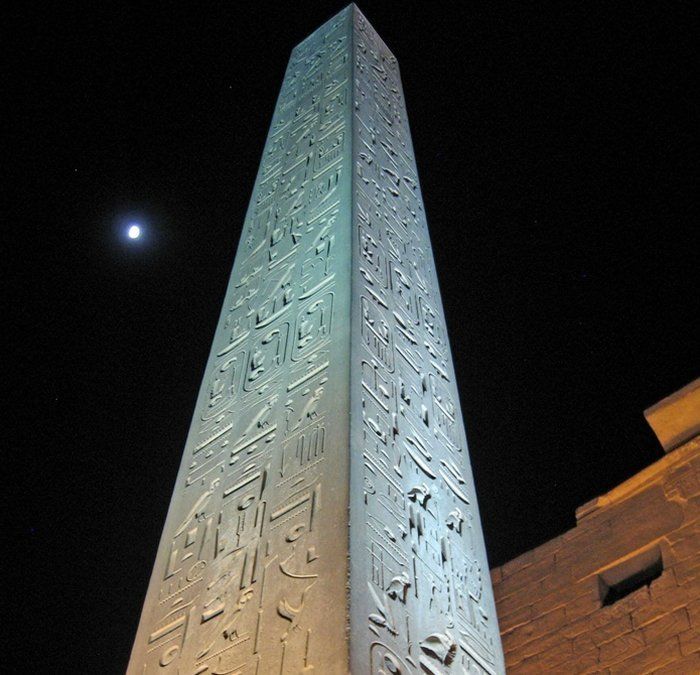History of powerful gigantic shafts of polished granite –
known as obelisk – is shrouded in mystery.
The obelisk is a monolithic, four-sided piece of stone, placed upright and ending with a pointed top, which forms a small pyramid known as a pyramidion.
Obelisks were symbols of the solar god Ra in ancient Egypt and were often covered with gold. They were also commonly raised in pairs.
What Was The True Reason For Building Obelisks?
It seems this reason is obscure. They were used in ancient Egypt as monuments and for other purposes, such for example, to praise pharaohs for their victorious battles,
“The obelisk was a focal point that gave the population heart and connection to their solar deity, the god Ra…”
Left: Granite obelisk of Hatshepsut at the Temple of Karnak in Luxor, built 1457 BC, during the XVIII dynasty.
Right: Fallen obelisk of Hatshepsut, KArnak.
It is believed that the oldest one is probably the obelisk at Abusir, erected during the reign of pharaoh Niuserre (2249-2417 BC), who was a successful builder and the sixth ruler of the Fifth Dynasty during the Old Kingdom period.
Knowledge About Gigantic Obelisks Is Lost
History of obelisks is very old but knowledge about these enigmatic structures including advanced technologies used to elevate them into vertical position is lost today. Ancient obelisks are monolithic, which means they consist of a single stone.
Most of modern obelisks are made of several stones and one example can be the Washington Monument.
However, the ancient Egyptians had sufficient mechanical skills to carve and erect smaller obelisks.
The oldest obelisks located near the funeral chambers of the kings, were between 1 to 4 meters high. Egyptians called them “Tekhenu” a term of which origin is unknown, but “tekhen” means “to pierce”. It is believed that the obelisk symbolically “pierced” the sky.
Were Obelisks Dedicated To The Sun Or Were They Signposts?
According to Herodotus these structures were related to the sun and symbolized “the Sun’s rays” and were often covered with hieroglyphic accounts. Also, a Roman writer and scholar, Pliny (23-79 AD), wrote that the gigantic obelisks in the ‘Land of the Pharaohs’ were dedicated to the Sun (Solis numini sacratos) and represented an image of the sun.
One of famous obelisks still standing at the entrance of the Luxor Temple.
Vivant Denon (1747 – 1825) was a French archaeologist, artist, writer, diplomat and author, wrote two-volume “Journey in Lower and Upper Egypt” (“Voyage dans la basse et la haute Egypte“) in 1802 and his work became the foundation of modern Egyptology.
Denon suggested that ancient Egyptian rulers used obelisks as signposts “to make certain things known to their subjects for their common good.”
Hieroglyphic Inscriptions Appeared Much Later
One of some interesting theories says that all colossal obelisks, because of their impressive structure, were only used by ancient Egyptians for different purposes.
It is believed that all original obelisks of gigantic size were created as single stone monuments much earlier by unknown very advanced culture and without hieroglyphs!
But it is also known that great Queen Hatshepsut erected four obelisks in the temple of Amun at Karnak. Two of the do not exist today and the remaining pair includes one, which is fallen and the northern obelisk, which still stands in its original position. The obelisk is made of red granite and of one single piece of pink granite. It is the second biggest of all the ancient obelisks of Egypt; its height is 28.58 meters and its weight is 343 tons. It is located in the Big Temple of Amon, in Karnak.
In the days of the pharaohs, many temples were built around the obelisks and hieroglyphic inscriptions appeared on them.
Until today it is not clear how these gigantic structures weighing hundreds of tons were quarried, transported and later raised.
What kind of extraordinary tools the artisans, engineers and sculptors used in order to execute their designs?
Dunn says in his book “Lost Technologies of Ancient Egypt: Advanced Engineering in the Temples of the Pharaohs” that “there are no surviving tools or machines that can be shown to have produced this work. Those that survive are incapable of such accuracy, especially on an industrial scale…”
Source: http://www.messagetoeagle.com/unknow...st-technology/
peace...







 Reply With Quote
Reply With Quote
Bookmarks